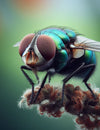Introduction:
Cockroaches, those ancient and resilient insects, harbor a fascinating secret within their life cycle— the enigmatic world of cockroach eggs. In this exploration, we aim to unravel the mysteries concealed within these seemingly unassuming capsules, shedding light on the intricate details of cockroach reproduction. As households grapple with the persistent presence of cockroaches, often resorting to solutions like cockroach killer gel, understanding the nuances of their life cycle becomes even more crucial.
The Life Cycle of Cockroaches:
Cockroaches, belonging to the order Blattodea, undergo incomplete metamorphosis, a process characterized by three distinct stages: egg, nymph, and adult. Unlike insects with complete metamorphosis, such as butterflies, cockroaches do not undergo a pupal stage. Instead, they emerge from their eggs as nymphs, resembling miniature versions of the adults.
The Egg Stage:
At the heart of the cockroach life cycle lies the egg stage, encapsulated within structures known as oothecae. These oothecae serve as protective shields, safeguarding the developing embryos from external threats. Female cockroaches invest significant time and energy into constructing these oothecae, choosing secure locations to deposit them.
Species Variability:
One of the intriguing aspects of cockroach reproduction is the variability in the number of eggs within an ootheca, and this largely depends on the species. For instance, the German cockroach (Blattella germanica) is known to produce oothecae containing approximately 30 to 40 eggs. In contrast, the Oriental cockroach (Blatta orientalis) tends to have fewer eggs per ootheca, ranging from 16 to 18.
Environmental Influences:
The reproductive potential of cockroaches is intricately linked to environmental factors. Adequate food, favorable temperatures, and secure habitats contribute to increased reproductive success. In environments conducive to their needs, cockroaches may exhibit larger clutch sizes, further emphasizing their adaptability to diverse conditions.
Survival Strategies:
The survival strategies of cockroach eggs are as remarkable as the insects themselves. The eggs are encased in sturdy shells that protect the developing embryos from various threats. This durability, coupled with the female's selection of secure deposition sites, ensures the offspring's survival, contributing to the resilience and adaptability of cockroach populations.
Conclusion:
While the precise number of cockroaches within a single egg may remain elusive without detailed examination, understanding the variability among species and the impact of environmental factors provides valuable insights into their reproductive strategies. Cockroaches, often viewed with disdain, exhibit an intricate dance with nature, showcasing remarkable adaptability and survival instincts.
As we peel back the layers of the cockroach's life cycle, it becomes apparent that within each seemingly inconspicuous ootheca lies a testament to the wonders of nature's ingenuity. The next time you encounter a cockroach egg or ootheca, consider the complexity hidden within, appreciating the intricate balance that sustains these resilient and ancient insects, and perhaps pondering the efficacy of solutions like cockroach killer gel in managing their presence.



